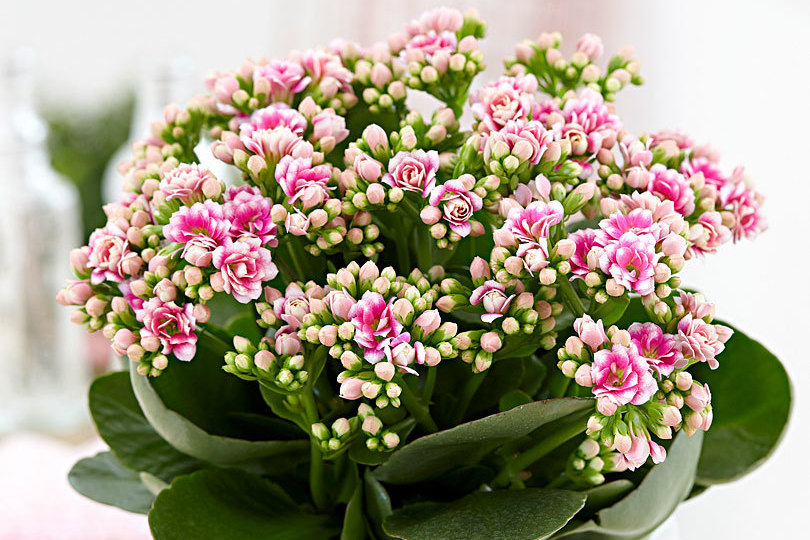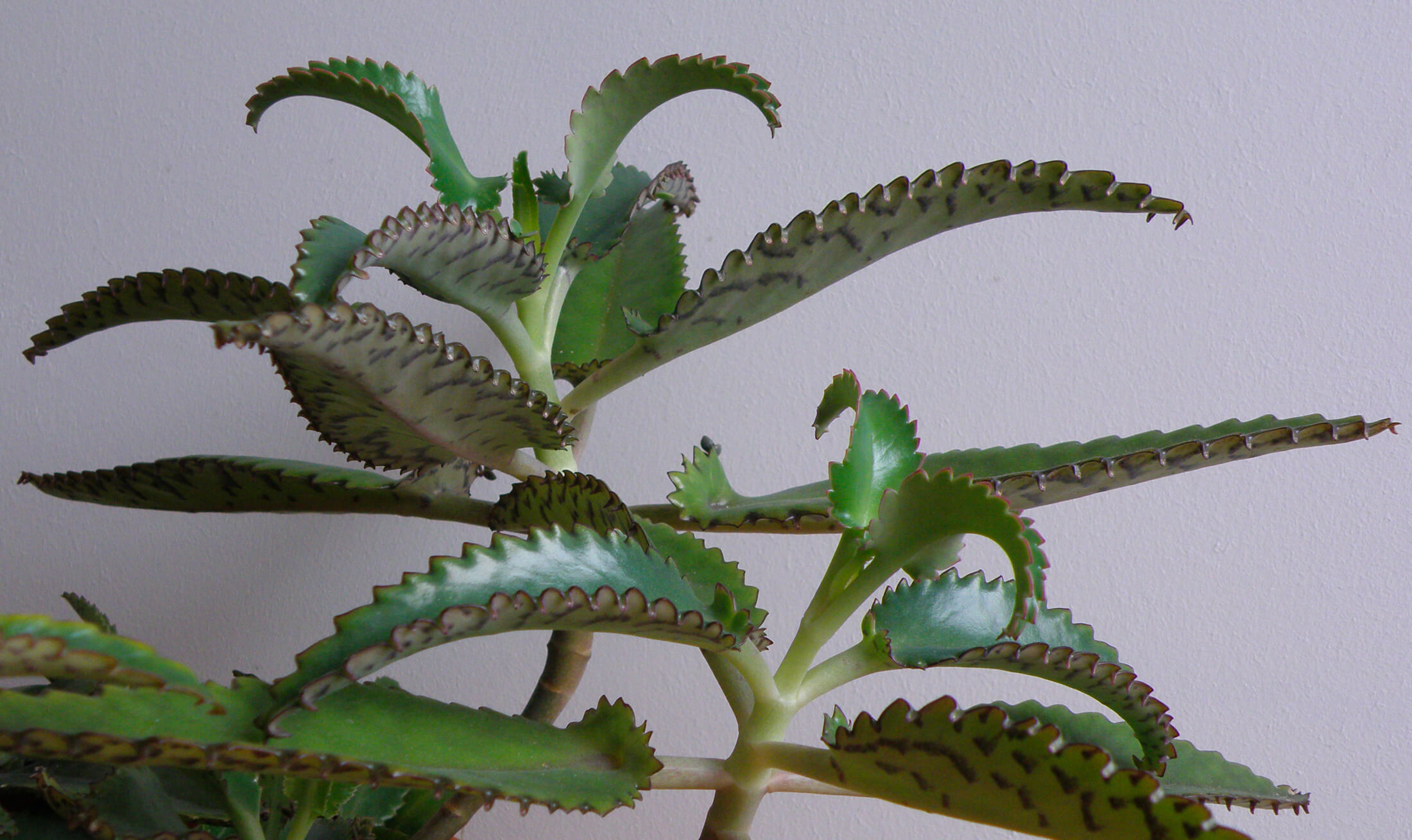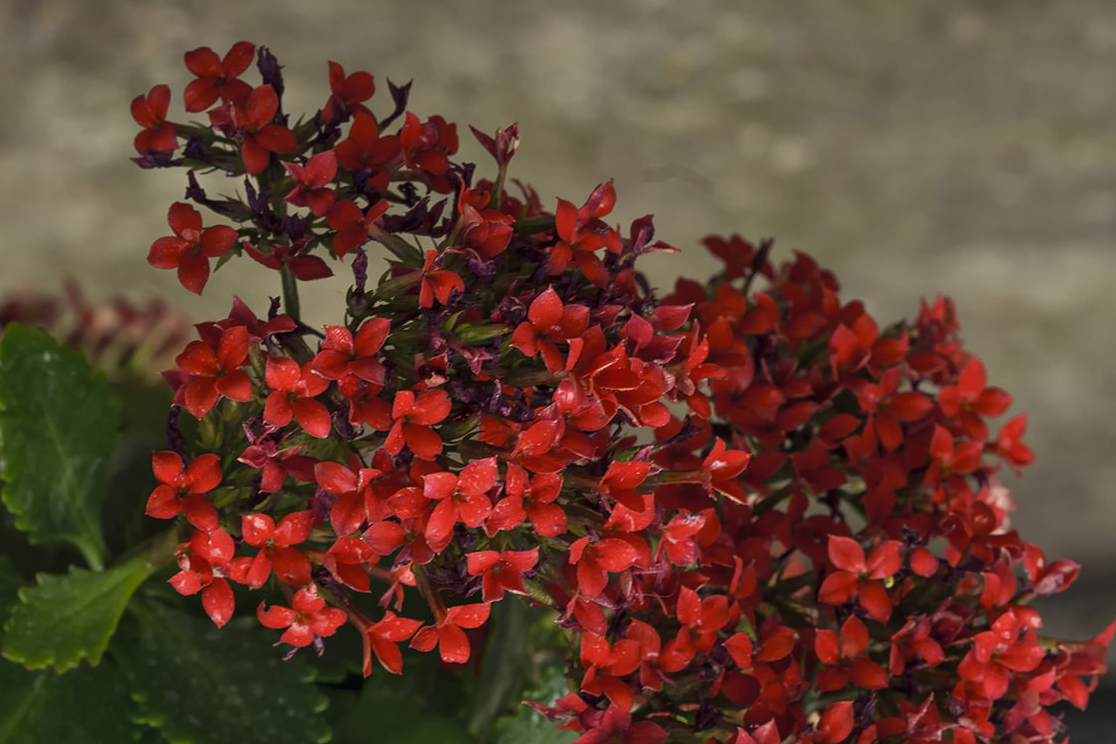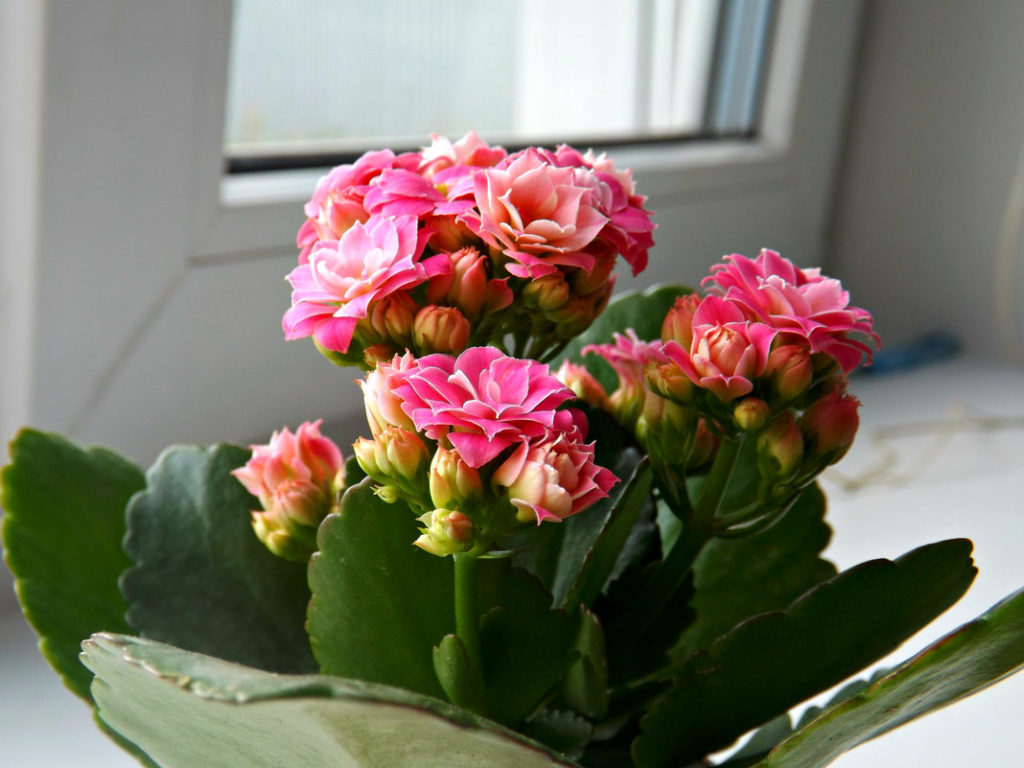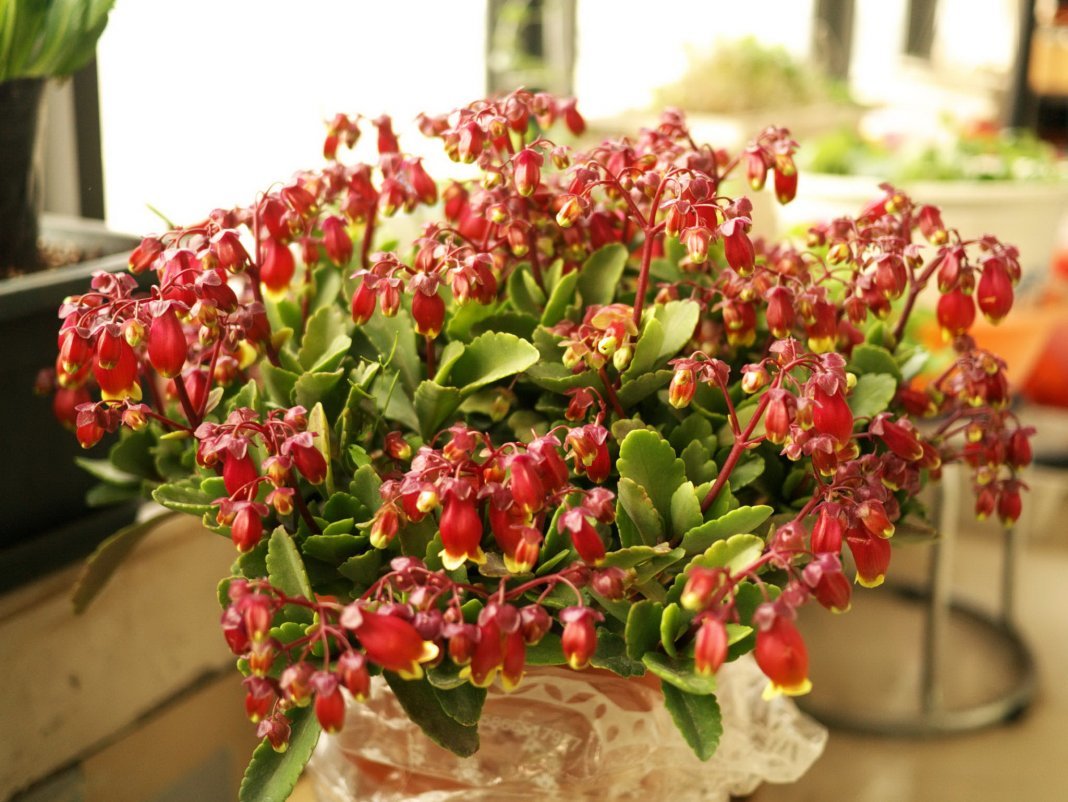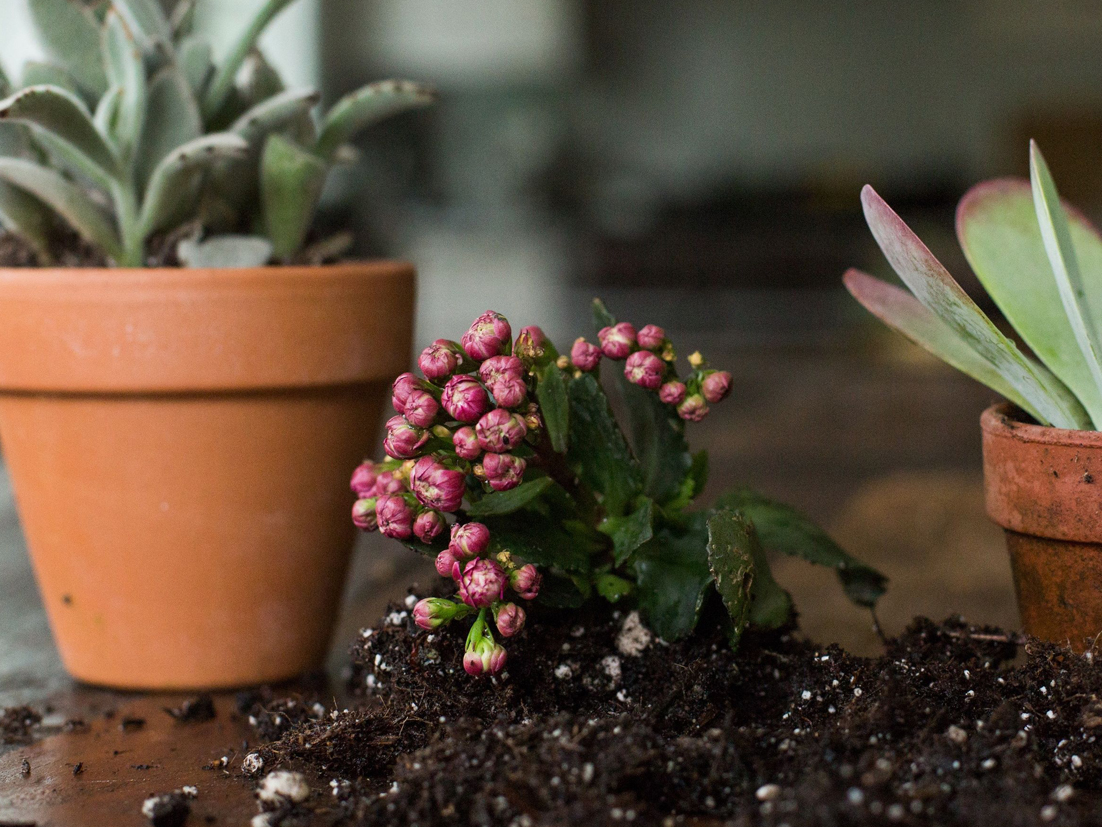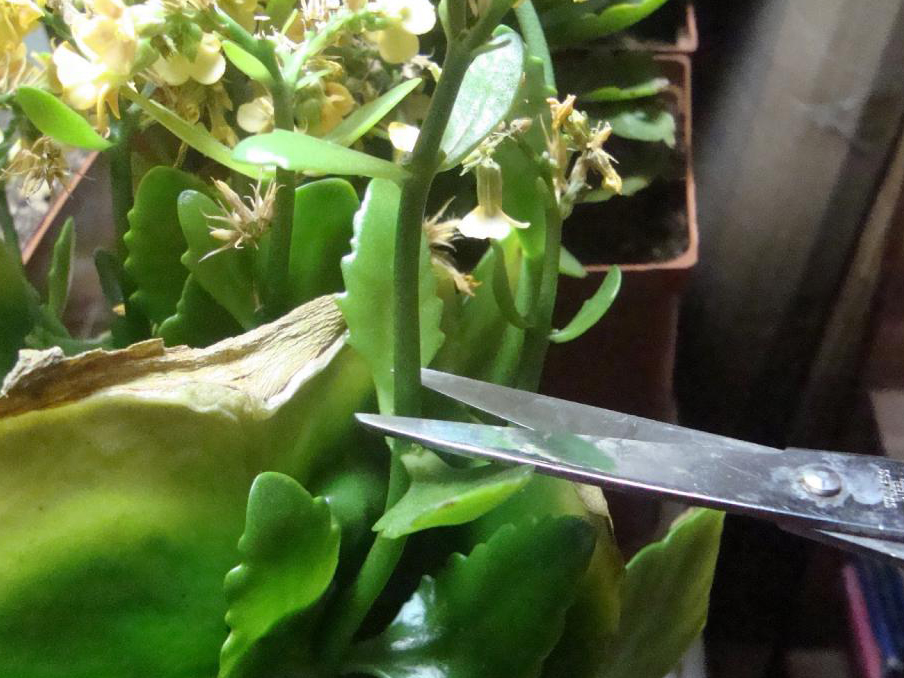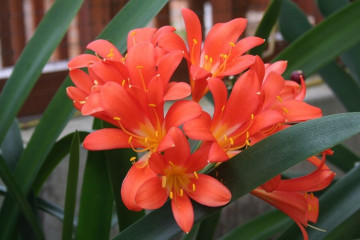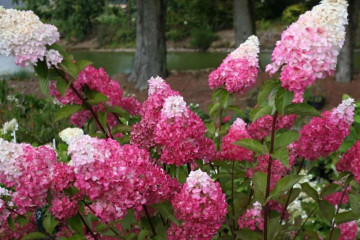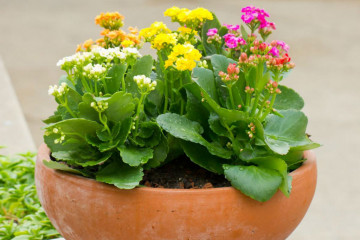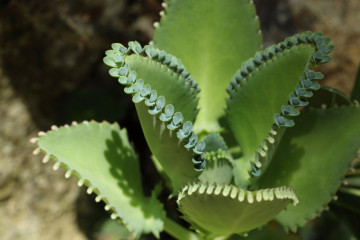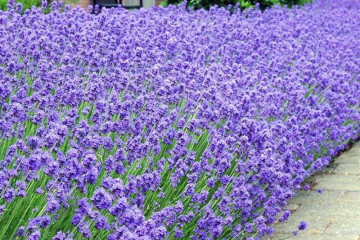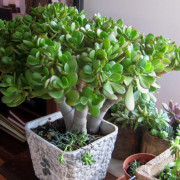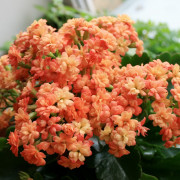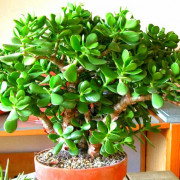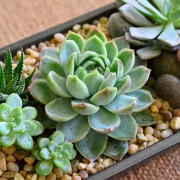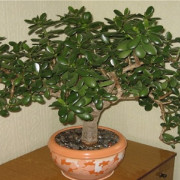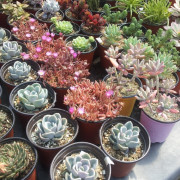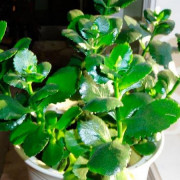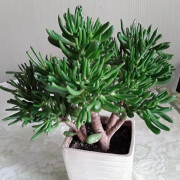When Kalanchoe blooms - how often at home
Content:
The extensive Tolstyankov family includes many species that can be successfully grown in an apartment. Flowering varieties are especially attractive, one of them is Kalanchoe. There are many varieties of this flower that amaze with the abundance of inflorescences and long flowering. Every florist would like not only to prolong this process, but also to achieve it again. For this, there are a number of recommendations for care at the moment when the Kalanchoe blooms and after this period.
Flowering Kalanchoe at home
It is thanks to the ability of the Kalanchoe to bloom not only abundantly, but for a long time, he was very fond of flower growers. In addition, there are many different varieties, which are very different in both the shape and color of the inflorescences.
Time and duration of flowering
Although the plant blooms once a year, this period can last from 3 months or more. In most indoor varieties, the flowering time falls in the winter-spring period, namely from the end of January to the end of March.
With proper care, the Kalanchoe bloom can be prolonged and re-budding can be stimulated. In this case, the flower will continue to bloom until mid to late summer.
Variety of varieties, types and shapes of inflorescences
Different types of Kalanchoe amaze with their originality and diversity. Some of them are so different in appearance of leaves and inflorescences that it is hard to believe that they belong to the same group of plants. For example, Kalanchoe laciniat is very original, the leaves of which look like a deer horn.
Kalanchoe Blossfeld
One of the most popular varieties is Blossfeld's Kalanchoe. This flowering plant is most often found in flower shops and garden centers. Despite the high decorativeness of the leaves and the ability to form lush and bright inflorescences, the plant is very unpretentious.
Different varieties can have simple or double flowers, painted in a variety of colors from snow-white to maroon. Some species can have complex colors that include two colors at once with a smooth transition from one to the other, such as Gevuld Serenity. In addition, this group also includes subspecies with different shades of inflorescences.
Kalanchoe Degremona
This rather large representative of the family is original in everything. It forms inflorescences of a paniculate shape, and each flower looks like an elongated bell, which is painted in a pale pink color. Flowering lasts no more than 2 weeks, but, unfortunately, often Kalanchoe Degremona dies after flowering. For this reason, most often this species is considered as a Kalanchoe without flowers.
The main feature of the flower is the ability to form young offspring along the edges of the leaf plate. Thanks to this, the reproduction of the plant is not difficult at all. Another distinctive characteristic of the species is the healing properties of leaves and shoots. The feathery species has similar qualities.
Kalanchoe Flame
This variety is more often called the red Kalanchoe. This native of Africa in indoor conditions does not grow more than 40-45 cm in height. Shoots are capable of active branching, requiring pruning and pinching to form a compact form.
Flowers are small, double, collected in inflorescences. The color of the petals ranges from bright red to orange.
The cultivation technique is similar to that of the Blossfeld Kalanchoe, but lower temperatures are preferred.
Kalanchoe Kalandiva
It is very easy to confuse this species with Blossfeld's Kalanchoe, since it is its subspecies. The size of the plant is very compact - the height of the rosette does not exceed 25-30 cm. It is this variety that is most often found in stores along with Blossfeld's Kalanchoe.
Differs in a very lush flowering, during which the cap of the inflorescences almost completely covers the leaves. Flowering is long lasting from January to the end of March, and sometimes longer.
Kalanchoe Mangina
This abundantly flowering succulent is also called the African bell. This is due to the shape of the inflorescences and the origin of the species. On a long peduncle there are inflorescences gathered in a corolla - bells.
The color of flowers can be red, orange or crimson, and sometimes the edge has a white border. The flowering period occurs in the last month of spring.
How to care for blooming Kalanchoe
Most often, the Kalanchoe, abundantly strewn with inflorescences, gets into the house from the store or is a gift for a holiday. To enjoy the bloom for as long as possible, the plant should be properly cared for. It is equally important to place the flower pot in a place favorable for its growth.
There are several basic rules for caring for a flowering specimen:
- the pot is placed on a light windowsill, but artificially shaded on a clear day;
- watering is carried out regularly as the soil dries completely, followed by the removal of excess moisture from the pallet;
- top dressing is applied every 2 weeks, using a complex mineral fertilizer for succulents (apply half of the norm indicated on the package);
- maintain the temperature during the day at the level of 19-23 ° С, and at night 2-3 ° С lower.
While the plant is blooming, it is better not to rearrange it from place to place. It is also not recommended to drastically change the temperature regime and expose the flower to cold air. Transplantation and other manipulations can be carried out only after flowering is complete.
What to do if Kalanchoe does not bloom
Sometimes flower growers try, take care of the plant, but flowering never comes. In this case, you should pay attention to the conditions for keeping the flower, which has some nuances. This is the only way to identify the reasons for the lack of flowers.
Reasons for the lack of flowering
A naturally diseased and depleted plant will not bloom - this is understandable to every plant lover. But, if the flower is actively increasing its vegetative mass, and refuses to bloom, there can be two main reasons:
- Neglecting a rest period. To start the process of bud formation, the flower must first have a rest and gain strength.That is why, after the end of flowering, it is necessary to create certain conditions that are necessary for the transition of the plant to a state of dormancy.
- Excessive daylight hours. Kalanchoe refers to plants with short daylight hours. In order for it to start blooming, it should be fully illuminated no more than 10 hours a day. In order to fulfill this condition, the flower should be artificially shaded in the evening.
Fulfilling these 2 main rules, it is highly likely that the Kalanchoe will bloom. Of course, this also implies compliance with all other plant care requirements.
How to stimulate flowering
Some diligent growers succeed and they manage to achieve flowering Kalanchoe 2 times a year. Considering that a single flowering is natural for a plant, a second flowering can be achieved only by artificially creating favorable conditions for this.
You can stimulate flowering by following several recommendations:
- to reduce the amount of fertilizers, gradually eliminating their application completely;
- maintain the duration of daylight hours no more than 9-10 hours shading the flower in the evening;
- control the growth of shoots by pinching the tops.
A more natural and plant-friendly method is to stimulate flowering by going through a dormant period. But, unfortunately, even after awakening and the start of shoot growth, flowering does not always occur. How many times the Kalanchoe blooms does not matter only if it is a medicinal variety.
Kalanchoe: care after flowering
You should take care of the flower at all stages of the development of the Kalanchoe; care at home after flowering is very important. It was at this time that a little more attention should be paid to the flower, because this is the key to the health of the Kalanchoe, which should bloom next year.
After all the flowers have faded, the main task of the grower is to properly prune the plant and create optimal conditions for it to go into a state of dormancy.
Resting
In order for the flower to gradually enter a state of dormancy, watering and feeding should be reduced immediately after the end of flowering. The average daily temperature is reduced by 3-4 ° C, and the illumination is made more moderate.
Pruning and pinching shoots
The end of flowering is a suitable period for pruning, which performs not only a formative, but also a sanitary function.
The process involves several manipulations:
- removal of peduncles;
- pruning dried and underdeveloped shoots;
- pinching the tops to stimulate branching;
- shortening shoots that are too elongated to form a compact crown.
Pruning after flowering helps the plant gain strength during the dormant period. With a decrease in the size of the bush, the consumption of nutrients from the soil also decreases, and the forces will be more directed to the development of the root system than to the growth of shoots.
Kalanchoe and many of its species can be safely called one of the most common indoor plants. Some varieties are distinguished not only by abundant, but also by very long flowering. In order to achieve the appearance of flowers, you should strictly follow the rules of flower care. You should also know what to do with Kalanchoe after flowering. Particular attention should be paid to reducing daylight hours and the obligatory transfer of the plant to a state of rest and rest.

